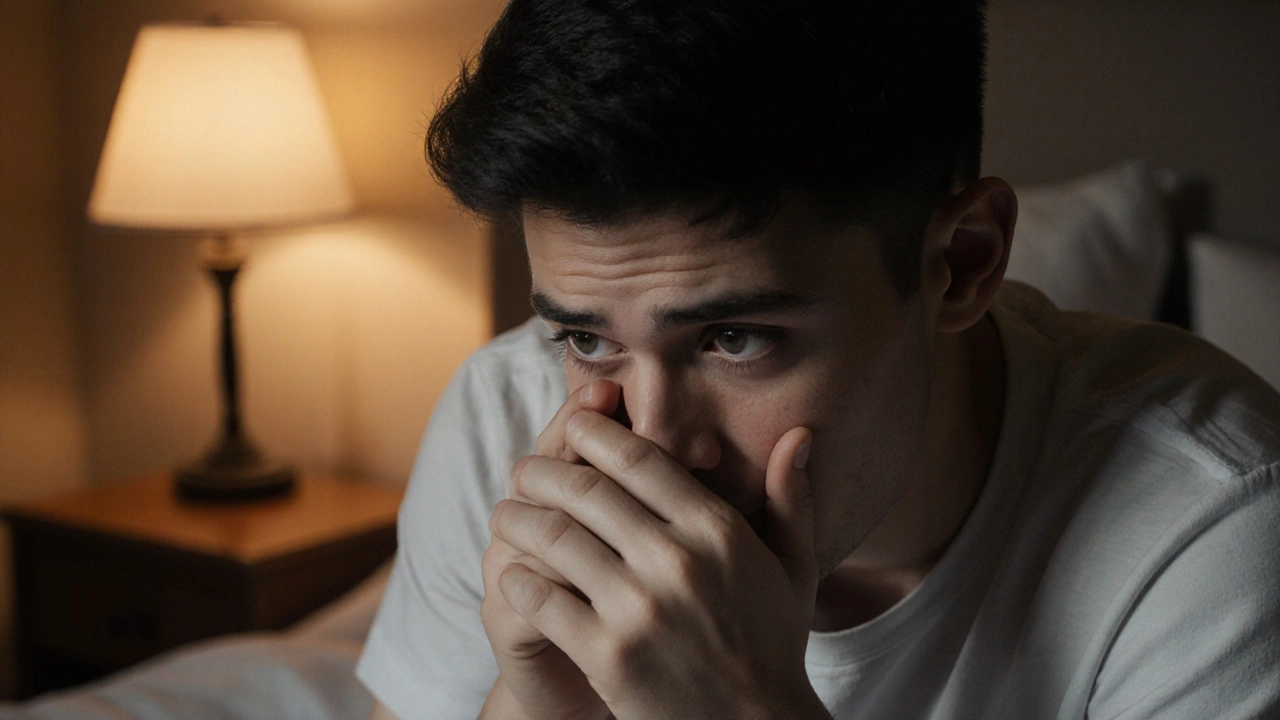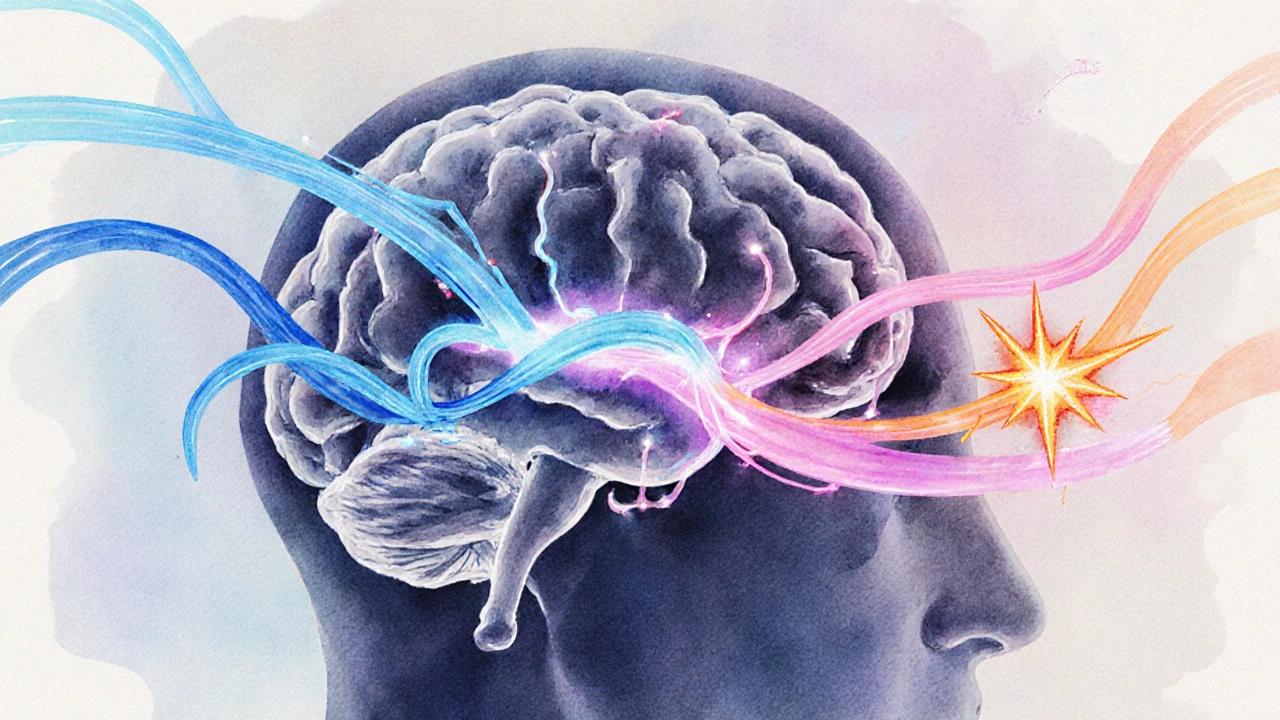Crying vs. Bottling Up: Which Is Better for Your Health?
 Oct, 11 2025
Oct, 11 2025
Emotional Expression Assessment Tool
How You Express Emotions
Answer 5 questions to discover your emotional expression habits and get personalized insights based on the science from our article.
1. When you feel sad or stressed, how often do you let yourself cry?
2. When you hold back tears, what physical symptoms do you experience?
3. How do you typically feel after crying or holding in emotions?
4. When you're upset, what do you prefer to do?
5. How supportive is your social circle when you express emotions?
Your Emotional Expression Profile
When you feel a wave of sadness, the first question that pops up is often: Crying is a natural physiological response that releases tears and triggers a cascade of brain chemicals. Some folks swear by a good sob session, while others think holding back shows strength. Below we break down the science, the social side, and the practical tips so you can decide what works best for you.
Why Crying Is a Natural Stress‑Relief Tool
First off, tears aren’t just salty water. Tear Film covers the eye’s surface, keeping it lubricated and flushing out irritants. When you sob, your body releases more of this fluid, which helps clear out stress‑related chemicals.
Research shows that a crying episode can lower Cortisol the primary stress hormone that spikes during anxiety. A study from the University of California measured cortisol before and after participants watched a sad movie; those who cried showed a 30% reduction in cortisol levels compared to those who stared straight ahead.
Besides cortisol, crying triggers a burst of Oxytocin often called the ‘bonding hormone’ because it promotes feelings of trust and connection. That little surge can make you feel calmer, more loved, and less isolated.
What Happens When You Hold It In?
Choosing to suppress emotions isn’t harmless. Emotional Suppression the act of intentionally stopping yourself from expressing feelings often keeps cortisol hanging around longer, which can increase blood pressure and weaken the immune system over time.
People who habitually bottle up report higher rates of anxiety, depression, and even chronic pain. The brain’s amygdala - the alarm center for fear and stress - stays overactive when you don’t give it a release valve, leading to a constant ‘fight‑or‑flight’ state.
Socially, hiding tears can send a signal that you’re not open to support. That can create a feedback loop where friends think you’re fine, so they don’t offer help, and you end up feeling even more alone.
The Science of Hormones and Brain Chemistry
Let’s zoom in on the chemistry. When you cry, the hypothalamus sends signals that release both cortisol (to ready the body for action) and oxytocin (to calm it down). The balance between these two determines whether you feel drained or refreshed after the tears stop.
Another player is Endorphins natural painkillers produced by the brain that also elevate mood. A good cry can boost endorphin levels, giving you that post‑sob ‘clear‑headed’ feeling.
In short, crying works like a built‑in emotional thermostat: it lets the body shed excess stress heat and settle back into a healthier temperature.

Social Perspective: How Others React
Humans are social creatures, and our reactions to tears are shaped by culture. In many Western settings, a man who cries may be labeled ‘weak,’ while in many Asian and Indigenous cultures, tears are a sign of authenticity and respect.
When you let yourself cry in front of trusted friends, Social Support the emotional and practical assistance received from others often kicks in. Studies show that people who share their sadness with close contacts experience a 40% faster recovery from acute stress.
That doesn’t mean you have to broadcast every sob on social media; a quiet moment with a confidant is enough to activate the brain’s soothing pathways.
Practical Guide: When to Let Yourself Cry
- Feel a tightness in your chest or throat that won’t go away.
- Notice that you’re snapping at loved ones for no clear reason.
- Experience a sudden surge of emotions after a movie, news story, or personal loss.
- Have a safe, private space where you won’t be interrupted.
If any of these ring true, give yourself permission to let the tears flow. You don’t need a full‑blown breakdown; even a few minutes of genuine tears can reset your nervous system.
Alternatives to Crying: Healthy Outlets
Not everyone feels comfortable crying, and that’s okay. Here are a few other ways to release the same stress‑relieving chemicals:
- Physical Exercise - A quick jog or a set of push‑ups spikes endorphins and lowers cortisol.
- Cold Showers - The shock triggers a sympathetic response that can shut down rumination.
- Journaling - Writing about what’s bothering you helps the brain process emotions without the need for tears.
- Deep Breathing - The 4‑7‑8 technique (inhale 4 seconds, hold 7, exhale 8) reduces amygdala activity.
- Talking to a Therapist - Professional guidance provides a structured outlet for emotional buildup.
Pick the method that feels right for you today, and remember that the goal is the same: release built‑up tension.

Comparison: Crying vs. Holding It In
| Aspect | Crying | Holding It In |
|---|---|---|
| Hormone Impact | Reduces cortisol, boosts oxytocin & endorphins | Cortisol stays elevated, oxytocin low |
| Physical Effects | Relaxes facial muscles, lowers heart rate after release | Increased muscle tension, higher blood pressure |
| Mental State | Improved mood, clearer thoughts | Greater anxiety, rumination |
| Social Reaction | Opens door for support (if trusted audience) | May appear strong but isolates you |
| Long‑Term Health | Supports immune function, lowers risk of depression | Higher risk of chronic stress‑related illnesses |
Quick Checklist - Decide What’s Best for You
- Do you feel physically tense? - Try a brief cry or deep breathing.
- Are you surrounded by supportive people? - Share your feelings.
- Do you have a healthy outlet already? - Keep using it, but add occasional tears.
- Notice frequent headaches or insomnia? - Consider professional help.
Frequently Asked Questions
Is crying really good for my health?
Yes. Studies show that a genuine cry lowers cortisol, releases oxytocin, and boosts endorphins, all of which help reduce stress and improve mood.
Can holding back tears cause physical problems?
Chronic suppression can keep stress hormones high, leading to higher blood pressure, weakened immune response, and increased risk of anxiety or depression.
What if I’m in a public place and feel like crying?
Find a discreet spot-like a restroom or a quiet corner-where you can let a few tears out. Even a short release can help reset your nervous system.
Are there gender differences in how crying is perceived?
Cultural norms often label men who cry as weak, while women may be judged as overly emotional. However, research shows the physiological benefits are the same for all genders.
What are some non‑crying ways to release stress?
Exercise, cold showers, journaling, deep breathing, or talking to a therapist all trigger similar hormonal changes that reduce stress.